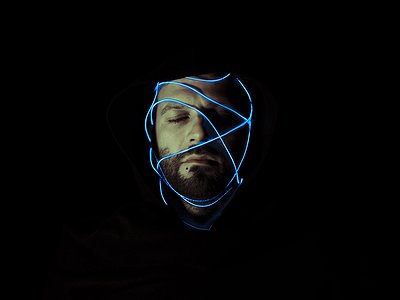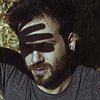Part 1
Name: Enrico Sangiuliano
Nationality: Italian
Occupation: Producer, DJ
Current Release: Biomorph LP on Drumcode
Recommendations: Here are some places to go and experience. First I would say the Rembrandt at the Rijksmuseum in Amsterdam, a masterpiece.
And then for travels, it has to be the Great Barrier Reef in Australia, I think this is one of nature’s finest example of art on the planet. It’s amazing, and breath taking.
Website / Contact: If you enjoyed this interview with Enrico Sangiuliano, visit his facebook page for more news and updates or his soundcloud account for current music and mixes.
When did you start writing/producing music - and what or who were your early passions and influences? What is it about music and/or sound that drew you to it?
I started producing in my bedroom when I was 14. Back then I was inspired more by genres of music than any specific artist. There were fewer genres back then, and not so many sub-genres, but I always listened to hardcore, trance, drum n’ bass and techno. As for albums, there were definitely some that stood out for me and I drew inspiration from them in the early stages of my production work. These include The Fat Of The Land by Prodigy and Daft Punk’s Homework. After experimenting for a couple of years, I started to play some of my first raves which gave me a clearer direction as to what I wanted to do. Which was to make my own records, the ones which at the time I felt were missing from my record bag!
For most artists, originality is first preceded by a phase of learning and, often, emulating others. What was this like for you? How would you describe your own development as an artist and the transition towards your own voice? What is the relationship between copying, learning and your own creativity?
I would say my first phase was a hybrid between psytrance and minimal techno, between 140 and 155 BPM. I started to listen, learn and produce these kinds of tracks, and a couple of them became really well-known party hits and fully represented my illegal rave era. The rave scene and the rave records were my inspiration, but as I mentioned earlier, I had such a wide spectrum of styles of music which I loved to listen to. Music from unknown producers, unreleased tracks that were being circulated hand-to-hand at the parties and passionate ravers. It was like being in a bubble at times, a psychedelic one! [laughs]
Copying teaches you how to get to a certain sound, and at the same time you learn about the machine you are using. But when you learn to take control of that sound, it gives you the possibility to be creative and shape it into something of your own, that's the real deal. That being said, I bring my own voice into my tracks using life as an influence; the highs, lows and emotions. Life inspires music and vice versa, so use your senses and put that into something creative.
What were your main compositional- and production-challenges in the beginning and how have they changed over time?
In the beginning, the challenge was to create party tracks which were as good as the records I was playing out. With each passing year, I started to bring my own experiences into the music I made, and tried to tell a story with every single track, whilst obtaining some peak-time weapons for those right moments on the dancefloors.
More recently, the biggest and widest step I have taken was to create a concept, and interpret that concept with music, as I have done with my album. There are 9 tracks on the album, but they have all been developed to be very individual and dynamic. At the same time, they still share a common element to create a musical journey that blends seamlessly into one project of music, in keeping with my sound and being free to experiment as much as I wanted to. My goal was to release a concept album that goes beyond musical composition. That's how Biomoprh was born.
What was your first studio like? How and for what reasons has your set-up evolved over the years and what are currently some of the most important pieces of gear for you?
Well, it used to be my bedroom for many years. First it was equipped with a Playstation X software called ‘Music’, along with some drum machines and a turntable to sample in real-time whilst recording on CD.
Then I bought a Mac, MIDI Keyboard and a UC33 controller, Reason DAW and I felt like I was in heaven! I slowly moved to a more flexible working solution; laptop, many plugins, Logic 7 and some Genelec 8040 speakers. This enabled me to work anywhere on the road. The last step for me was to move into a professional studio, where I ended up working as a sound engineer for 5 years. Since then I have been unable to go back to my old set up. It's a professional studio or nothing for me now.
Currently some of the most important pieces of gear for me are Native Intruments plugins and keyboard, Ableton Push, Roland hardware, and a Universal Audio Apollo soundcard. A fundamental role is played by the hardware synths that I find whilst touring and visiting friends in their studios. Often, I record jam sessions inspired by travels and the magic of playing a new synth that I don't have in my studio!
How do you make use of technology? In terms of the feedback mechanism between technology and creativity, what do humans excel at, what do machines excel at?
Technology is a means to an end. I use it for all my music as much as possible and to make everything about production more comfortable and precise. We excel at being irregularly perfect: the humanity of a drum pattern plated by a precise hand, the nuance between the semitones of the viola, can not be beaten by machines.
However, machines and technology allow you to create sounds with a certain desired level of precision, refinement and hyper performance. They can deliver a sound that perhaps a drummer could never provide, starting with the limits of the instrument (drums) itself. With a computer, you can create sounds which you can’t find in nature and make them reverberate in inexistent spaces.
Production tools, from instruments to complex software environments, contribute to the compositional process. How does this manifest itself in your work? Can you describe the co-authorship between yourself and your tools?
My tools are an exact extension of myself. I use them to translate what I have in my mind through music. I work in a symbiothic way; meaning they fill my technical and emotional needs, and I vent out their energy. I think we are a solid team! [laughs]
Collaborations can take on many forms. What role do they play in your approach and what are your preferred ways of engaging with other creatives through, for example, file sharing, jamming or just talking about ideas?
I love collaborations and cross-pollination in general, but only when they come spontaneously, and they play a key role on my path. For example, the cover of the new album is a collaboration between myself, two photographers, a HEAD couture designer, a graphic designer and then also an illustrator! Their vision, translation and interaction with the concept I created merged together to bring a rich, multi layered, visually deep result that I am really excited and happy with.
Performance wise though, I have done many collabs, including live sets, digital laptop orchestras and back to backs. Production wise, of course maybe the most obvious and expected when it comes to collaborations with another artist. I like to sit in the studio with someone I get a good vibe from and just jam freely. Sometimes it’s great, sometimes not, this depends on the mood as well. Sometimes you can’t always get into the studio with everyone you work with, so you have to do what I call 'ping pong’ – where you work individually on the projects and then send it to one another until you both are happy with the end result.






